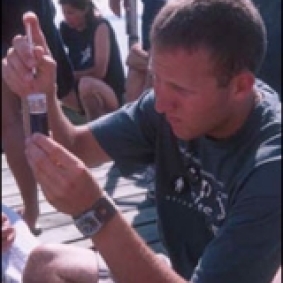Eight students will be presenting the summer work at the Ocean Sciences Meeting in March 2022!
Cory Catts, University of Florida
Class Year:
2004Mentor:
Walter Boynton Ph.D.Project Title:
Microzooplankton Grazing Influence on Phytoplankton Population Dynamics and Bloom Formation
Abstract:
Phytoplankton blooms within the Chesapeake Bay have become extremely prevalent in the past 50 years. These bloom events contribute to many of the problems facing the Bay today. Microzooplankton grazing on the phytoplankton community may have the potential to control phytoplankton populations and the formation of bloom events. To investigate the influence microzooplankton grazing has on phytoplankton population dynamics several grazing experiments were performed throughout the summer of 2004 in Solomons Harbor, Maryland. The experiments provided evidence that suggest microzooplankton grazing was higher then the phytoplankton community growth rate. When investigating species specific grazing on Prorocentrum minimum and Karlodinium micrum it was found grazing rates on P. minimum and K. micrum were similar to their growth rates. The results suggest the phytoplankton community as a whole may be controlled by microzooplankton grazing. Although the community as a whole was controlled by microzooplankton grazing, the species specific grazing on P. minimum and K. micrum was not actively controlling the populations. Instead grazing may hold populations of P. minimum and K. micrum in check until an unknown threshold is surpassed at which point growth can surpass grazing at which point bloom formation may be possible.



